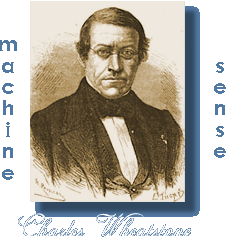|
 |
1817 CE
Colonel Decius Wadsworth invents a geared cipher disk. |
|
|
|
|
|
 |
1854 CE
Charles Babbage re-invents the wheel cipher. |
|
|
|
|
 |
 |
1854 CE
Charles Wheatstone invents the Playfair Cipher. |
|
|
|
|
|
 |
1857 CE
Admiral Sir Francis Beaufort's cipher is published posthumously. It is a variant of the Vignere cipher. |
|
|
|
|
|
 |
1859 CE
Pliny Earle Chase describes the first fractionating cipher. A two-digit number is assigned to each character of plaintext by means of a table. These numbers are written so that the first numbers form a row on top of the second numbers. The bottom row is multiplied by nine, and the corresponding pairs are put back in the table to form the ciphertext. |
|
|
|
|
|
 |
1861 CE to 1865 CE
During the American Civil War, the North uses simple word transposition ciphers, sending the plaintext message with the word order jumbled. The South uses Vigenere ciphers. |
|
|
|
|
|
 |
1863 CE
Friedrich W. Kasiski develops a cryptanalysis method against polyalphabetic ciphers with a repeating passphrase. It finds repetitions in strings of characters within the ciphertext. The distance between these repetitions is then used to find the length of the key. This method breaks almost every cipher of the day. |
|
|
|
|
|
 |
1861 CE
First US Patent on a cryptographic device |
|
|
|
|
|
 |
1891 CE
Major Etienne Bazeries demonstrates his version of the wheel cipher to the French Army. |
|
|
|
|
|
 |
1895 CE
Radio is invented |
|
|
|
|
|
 |
|











